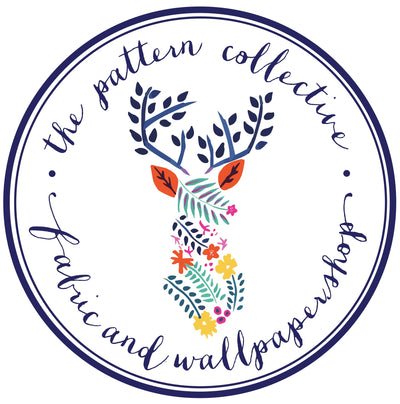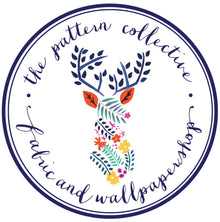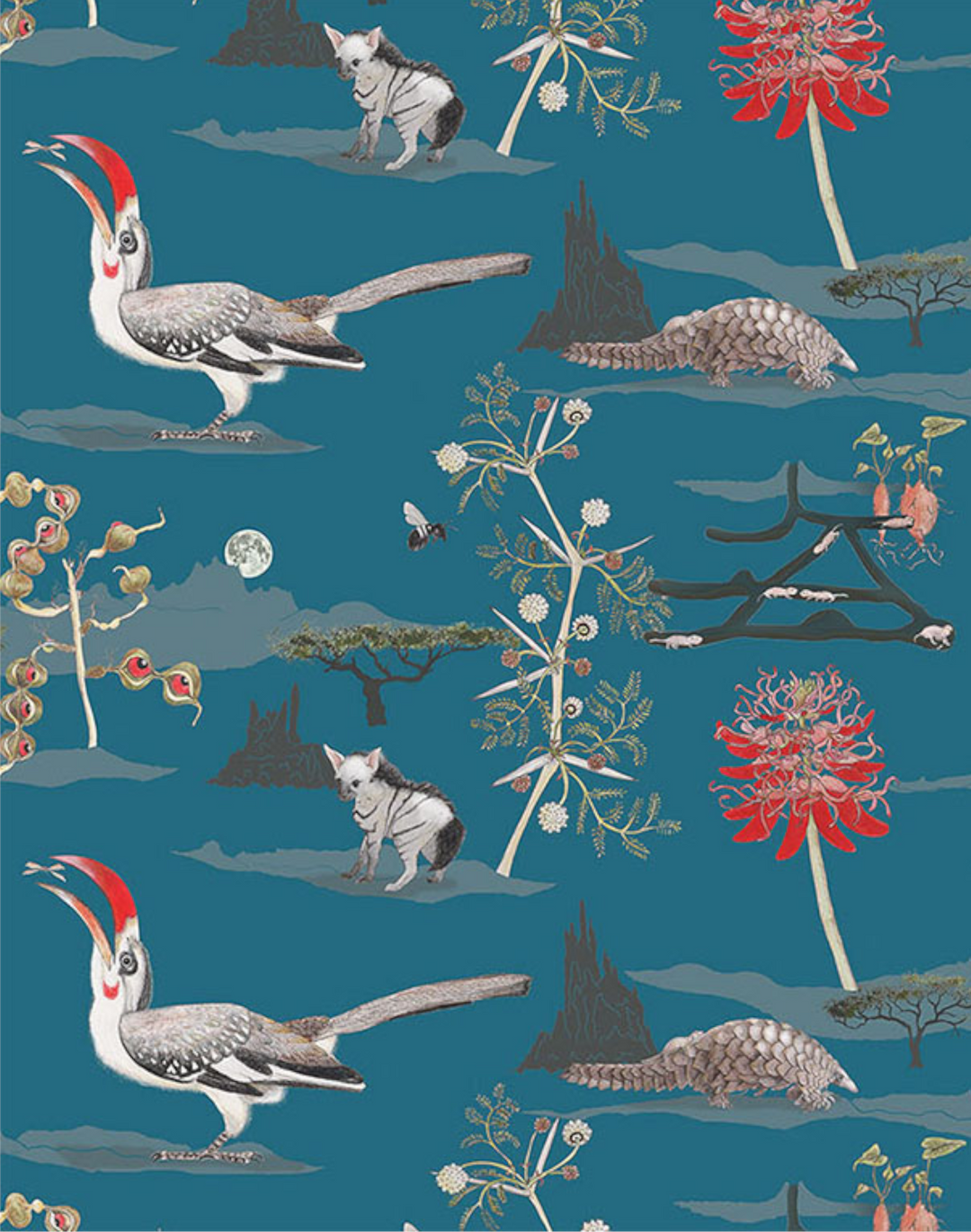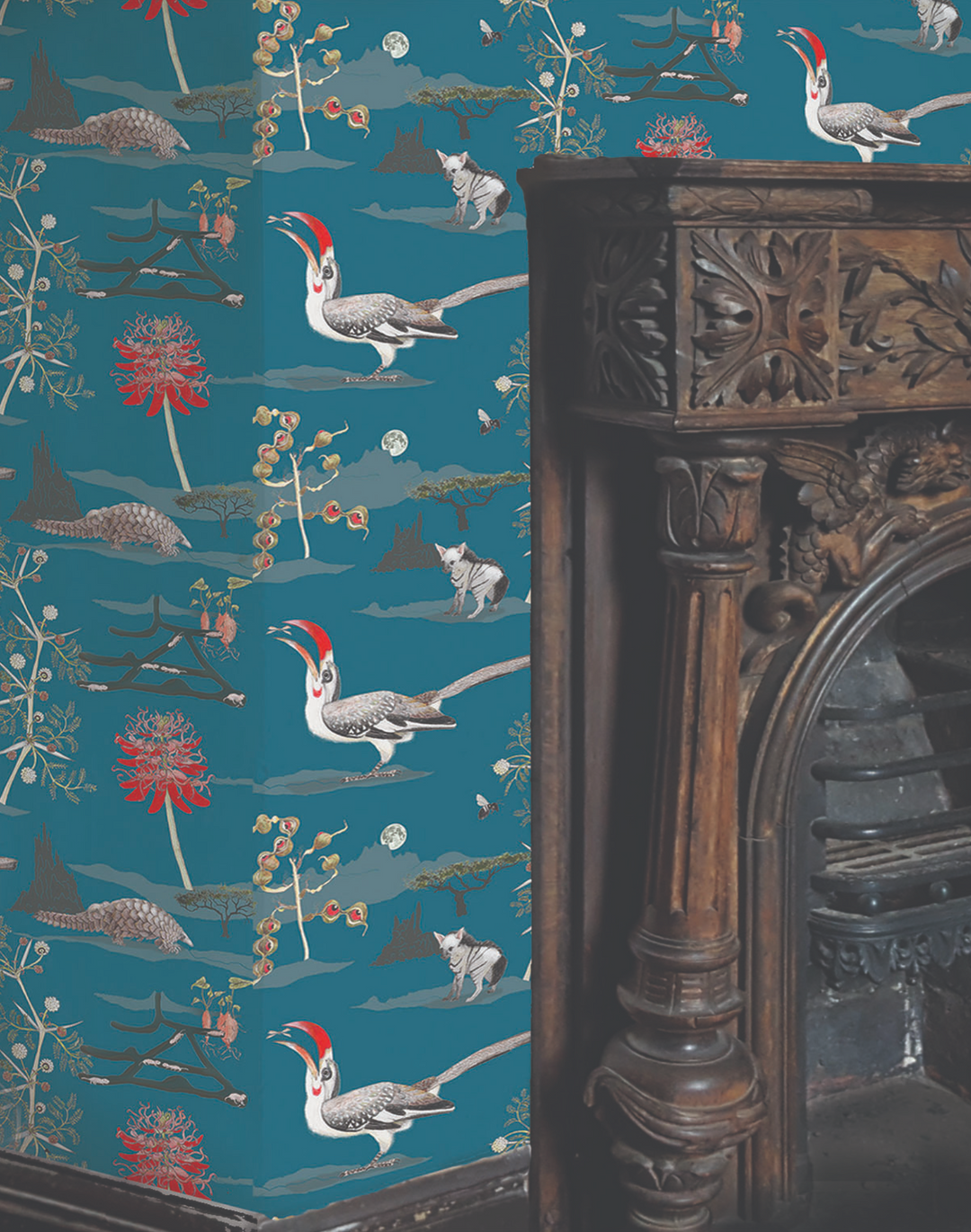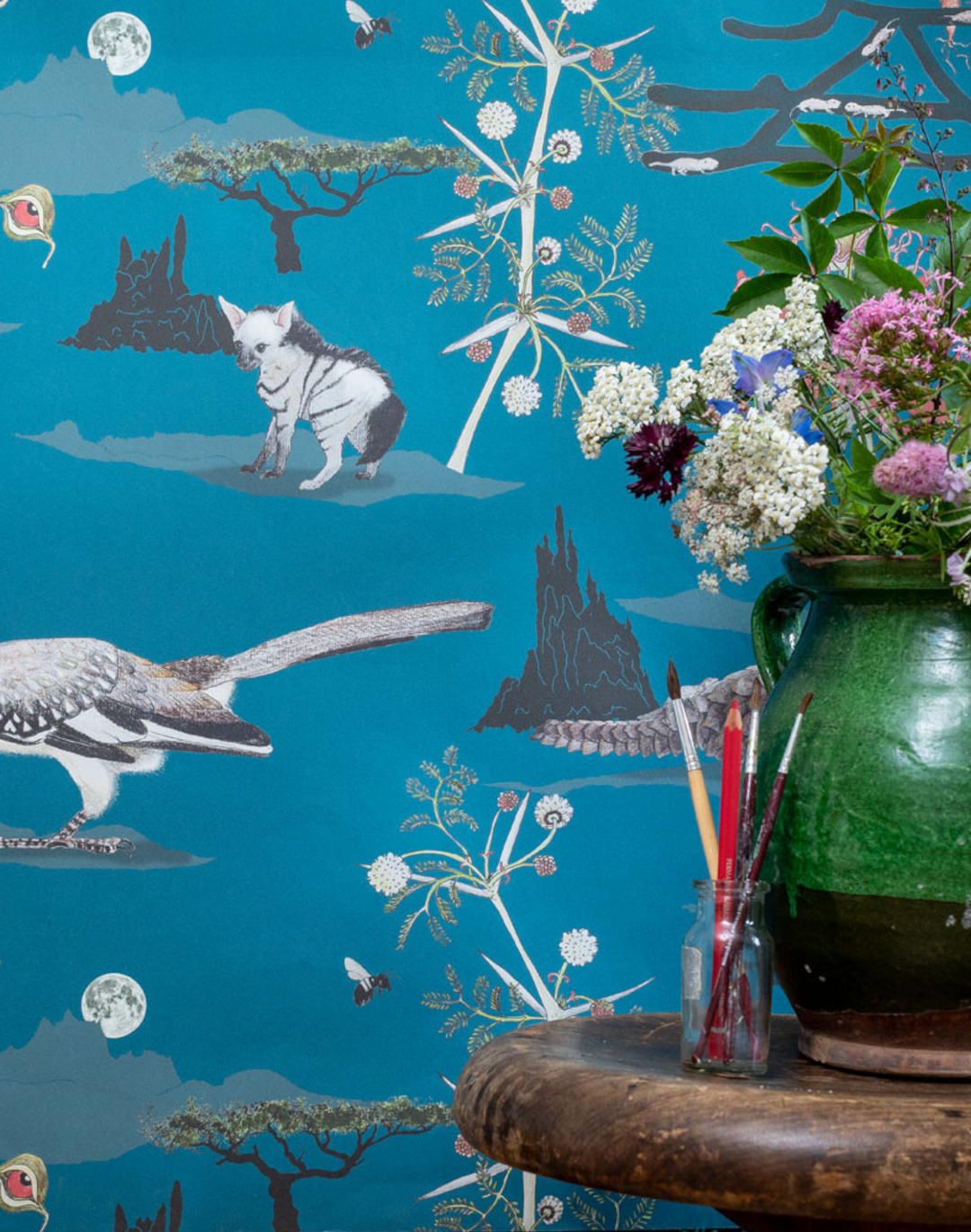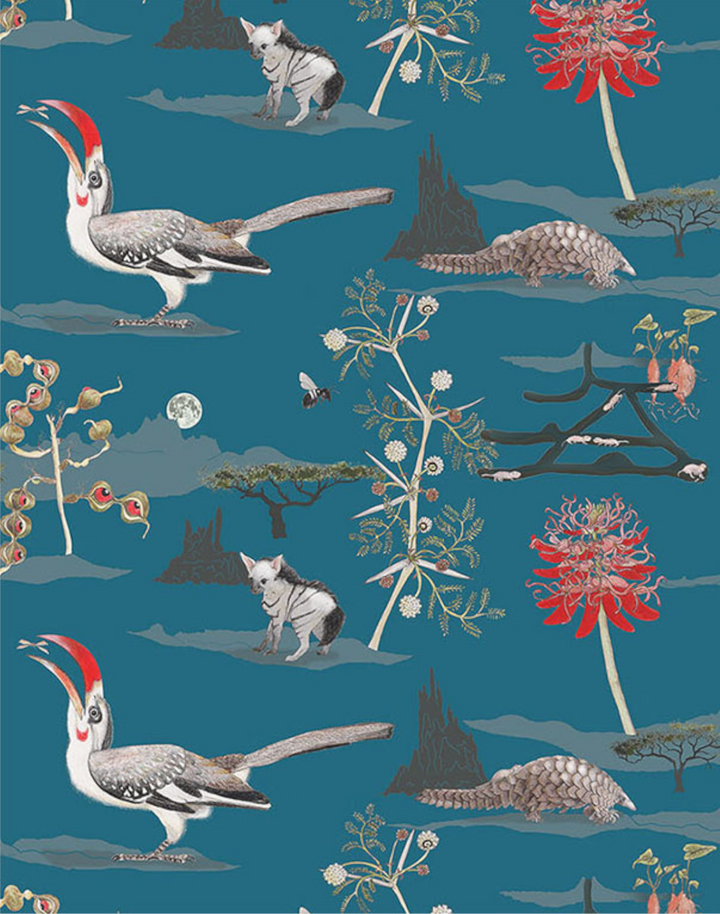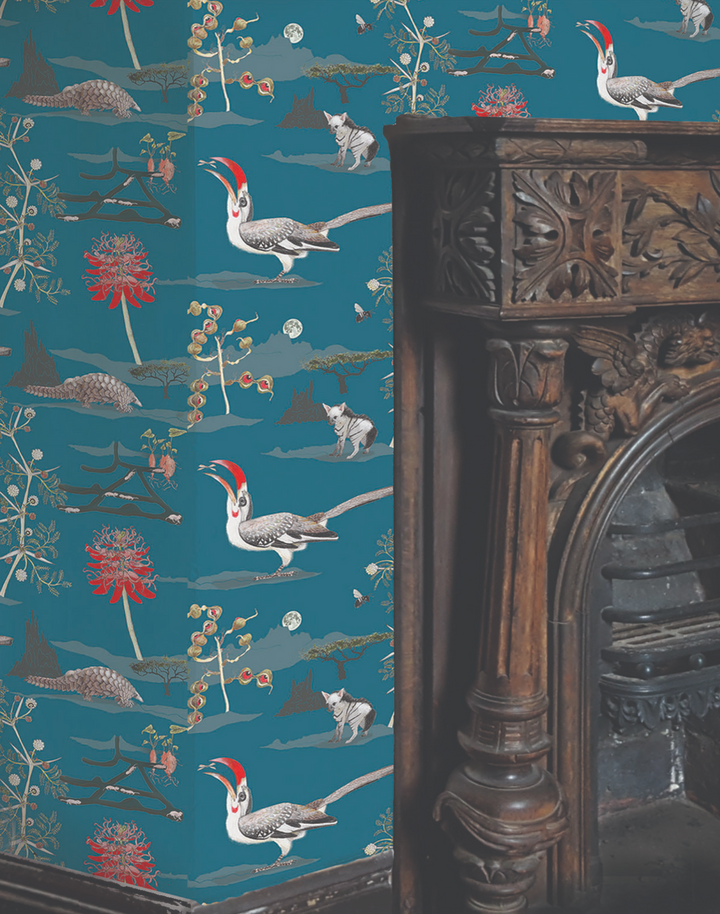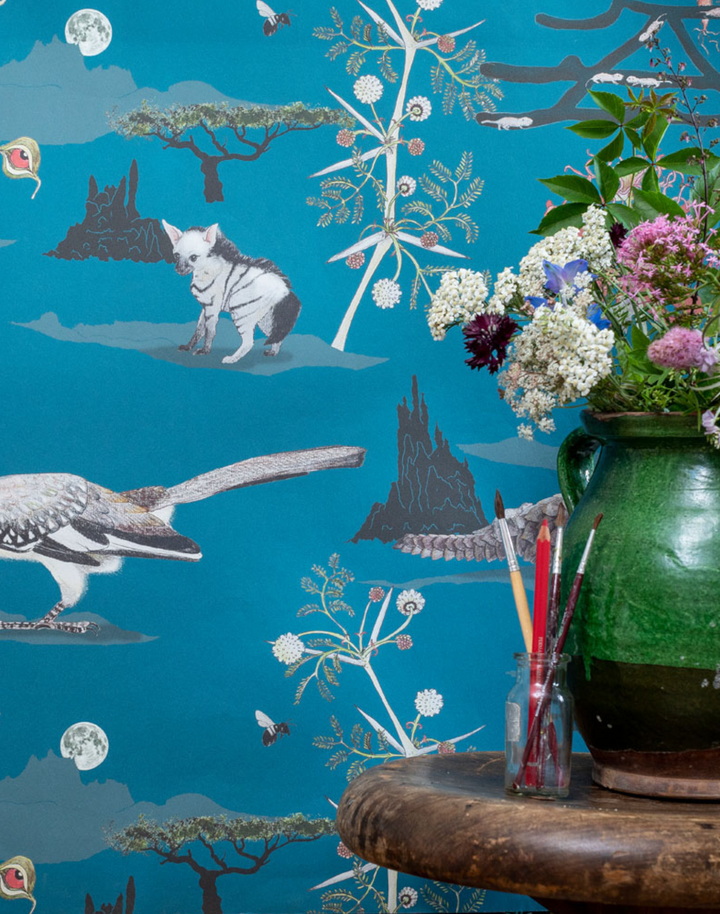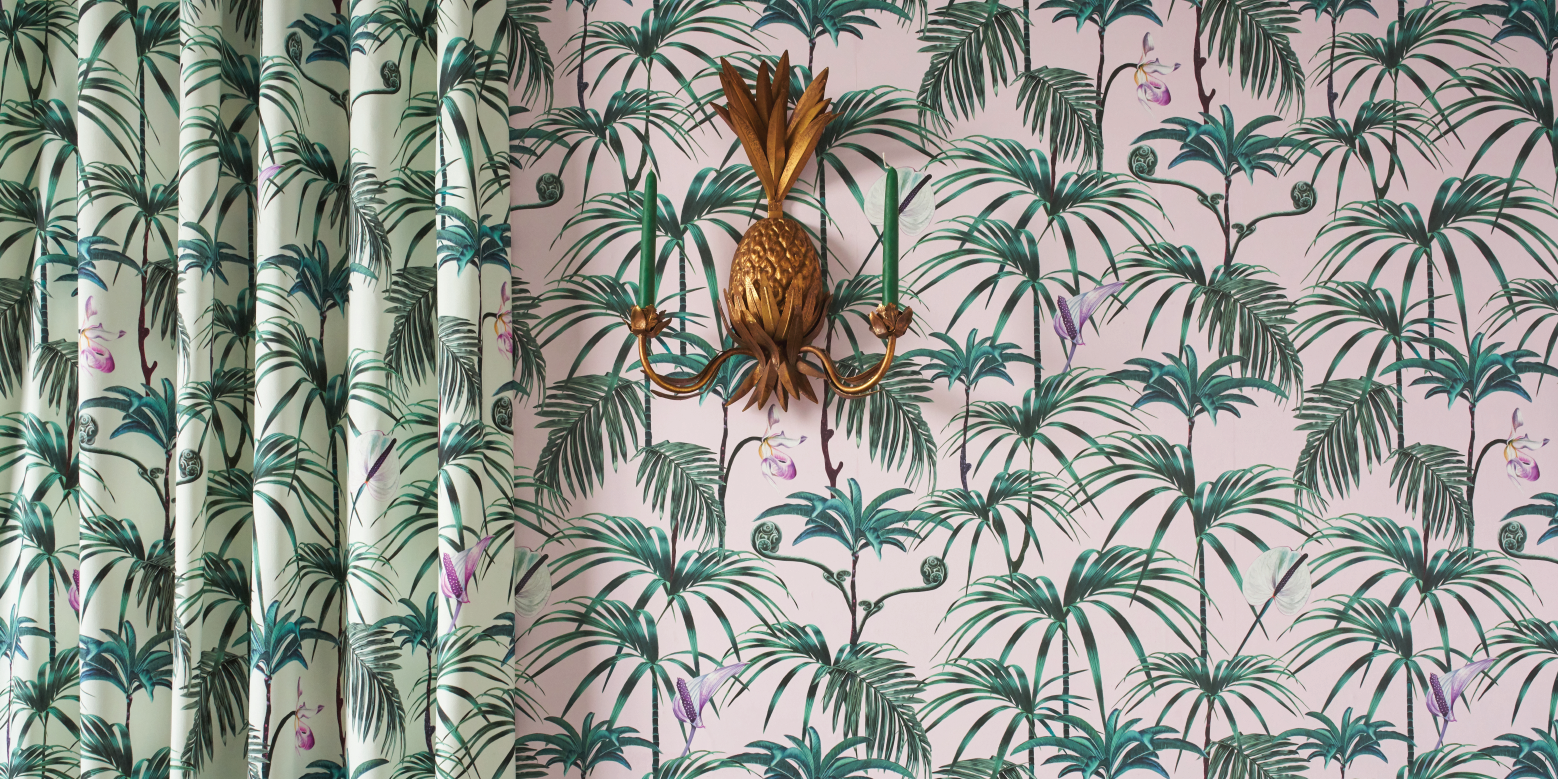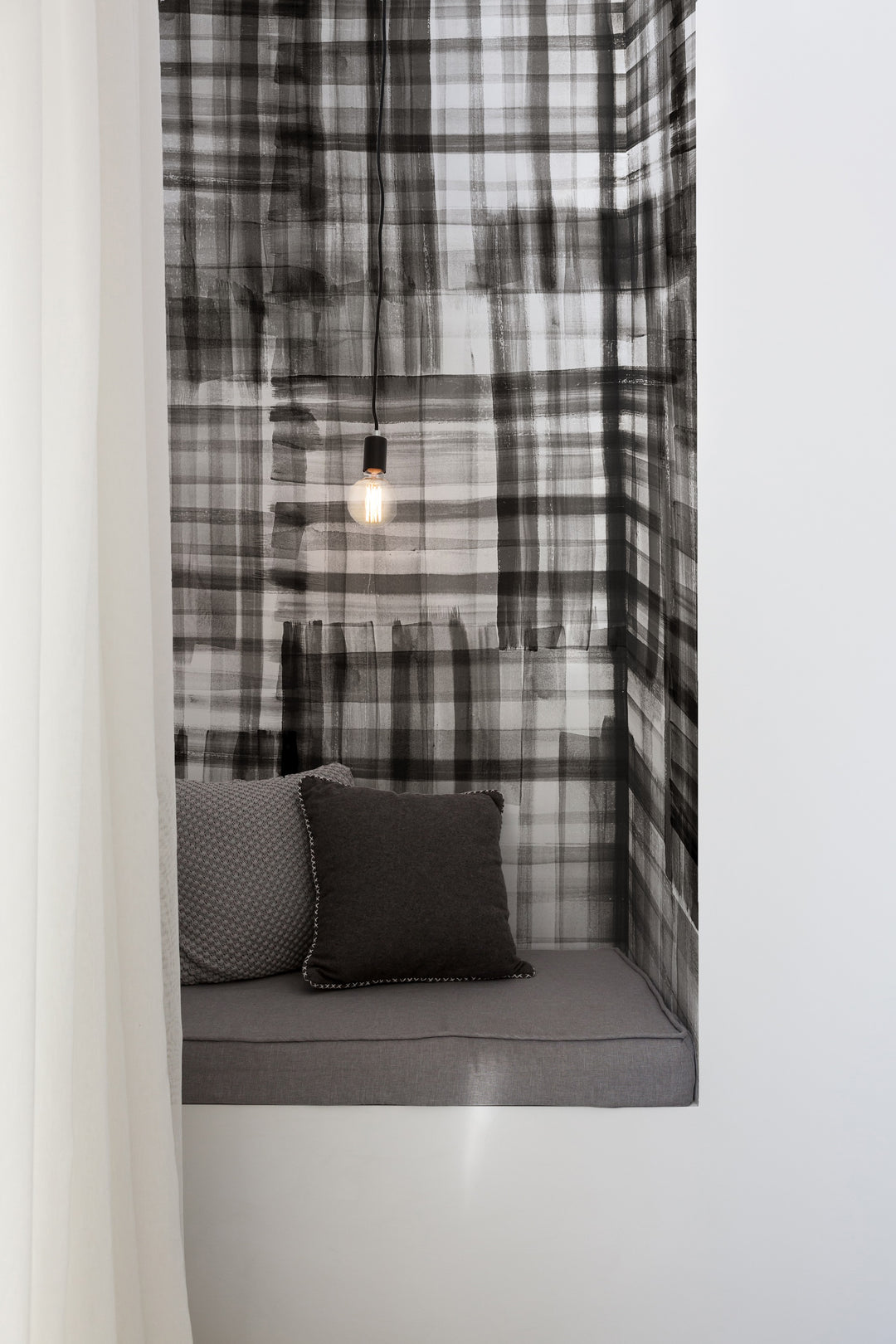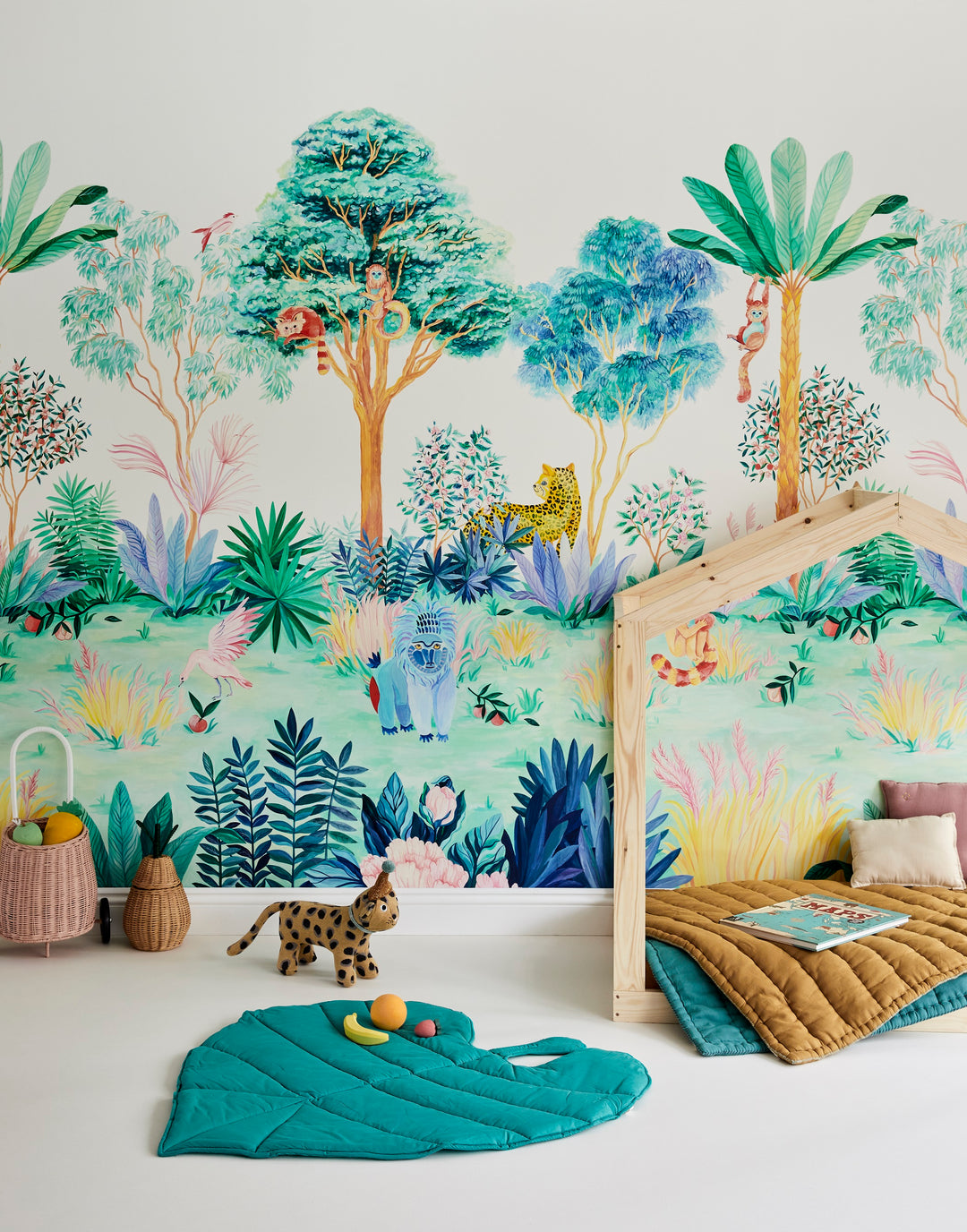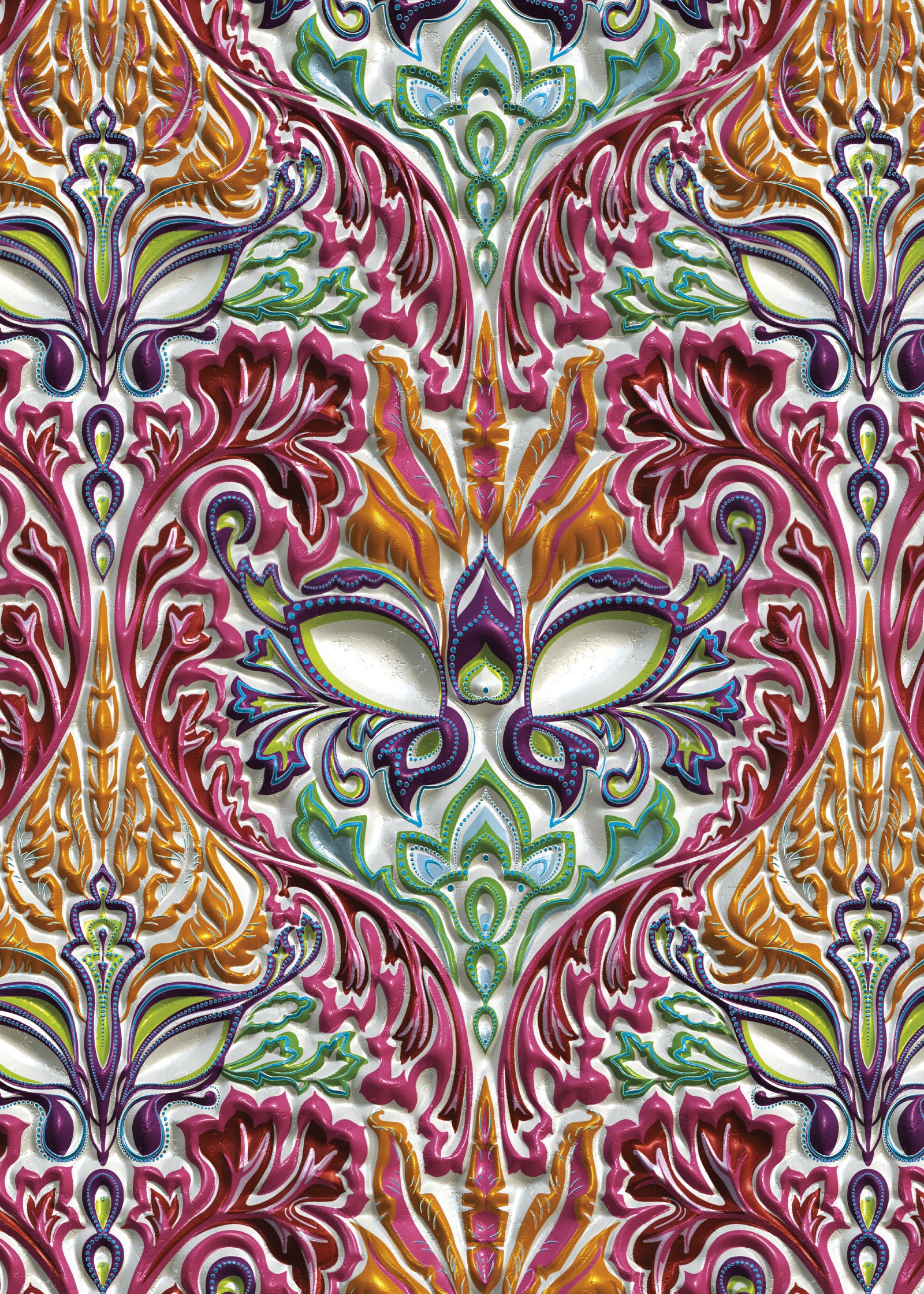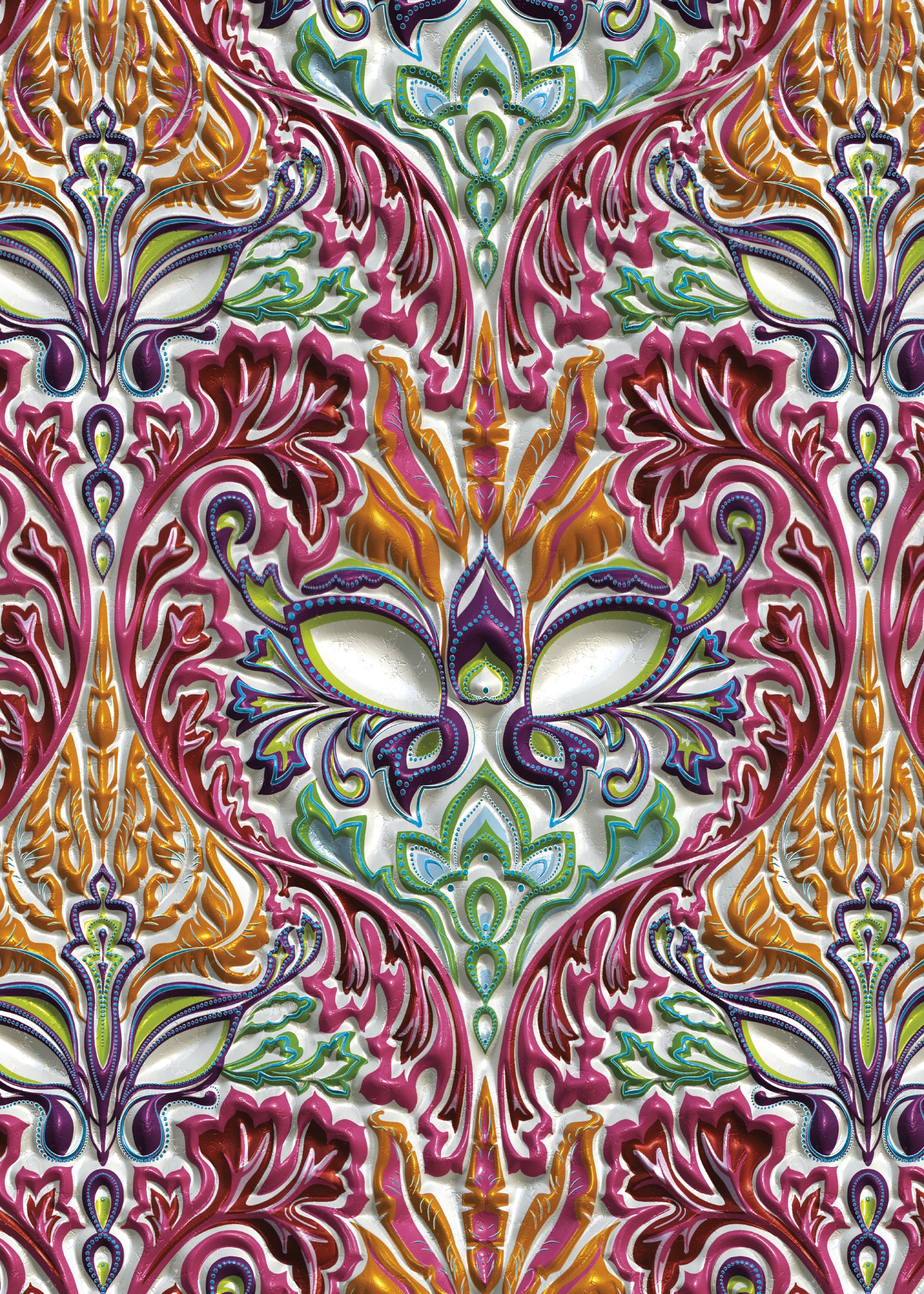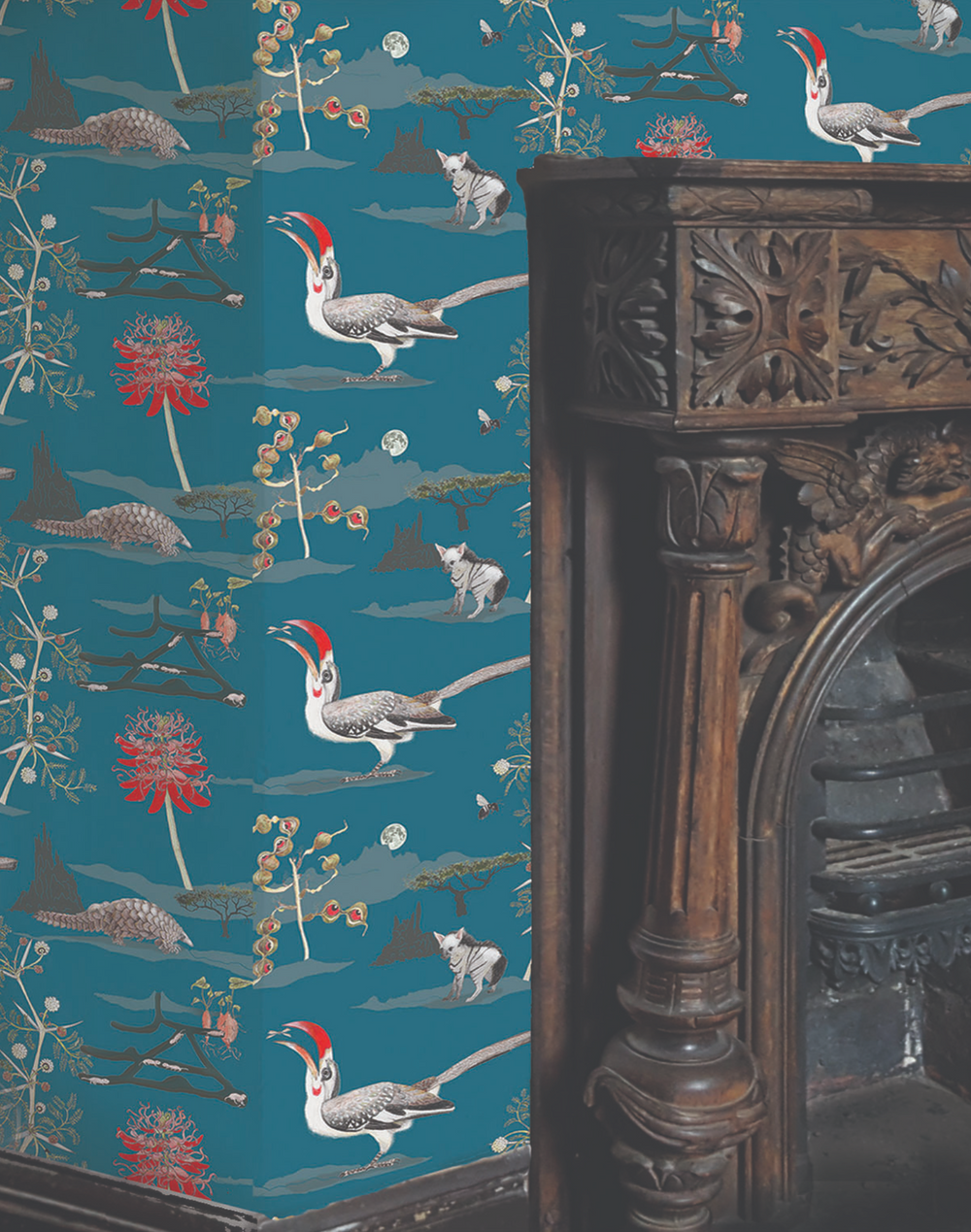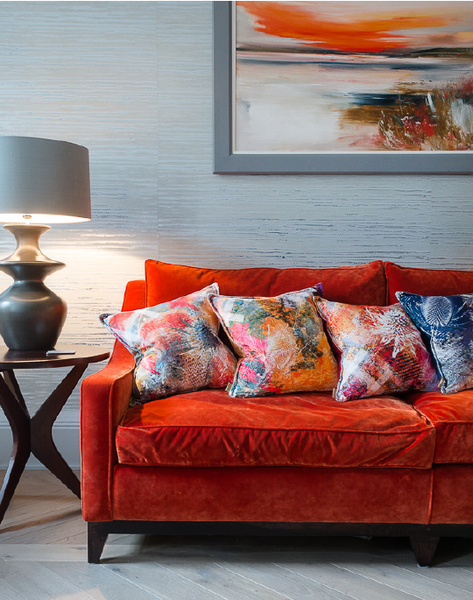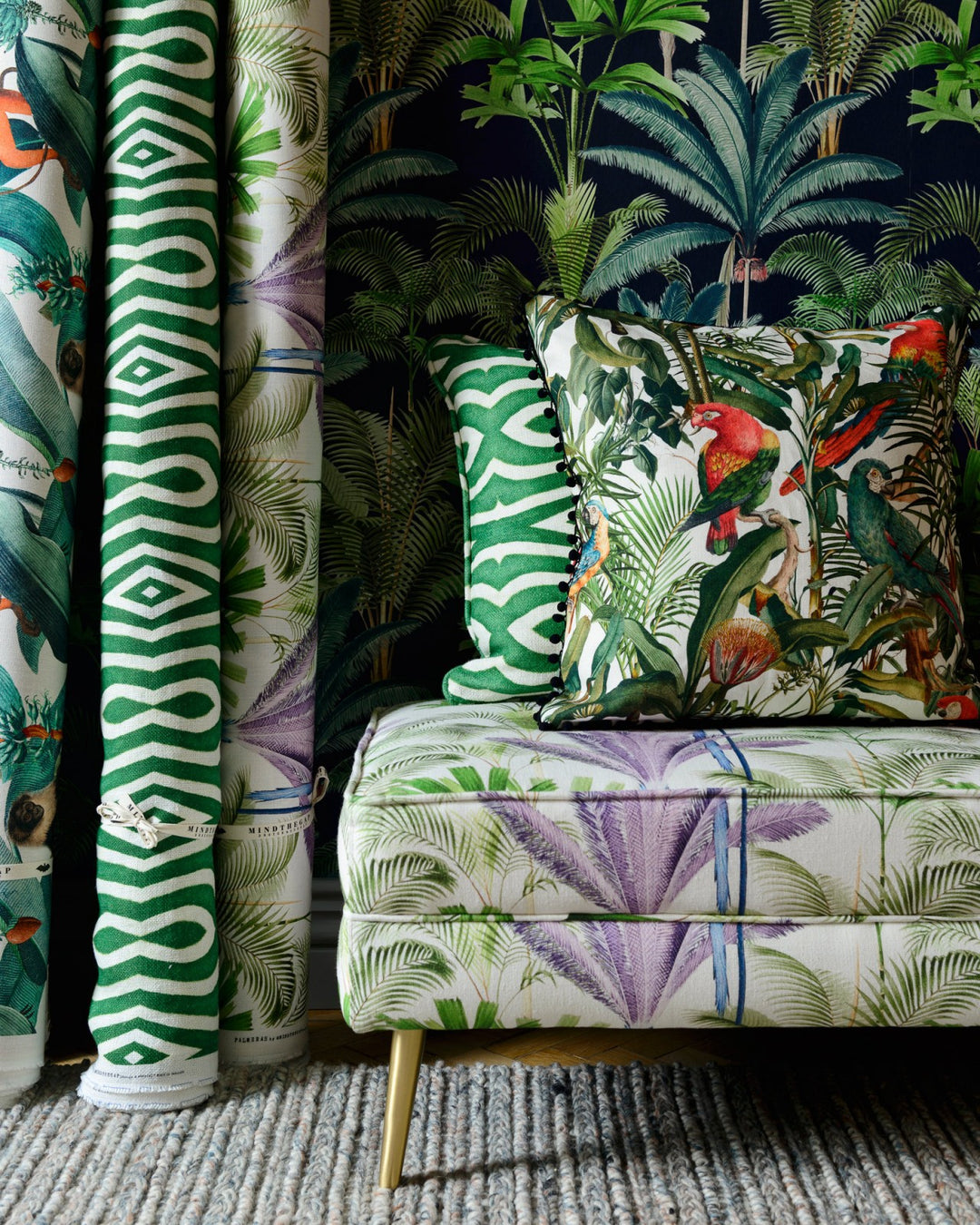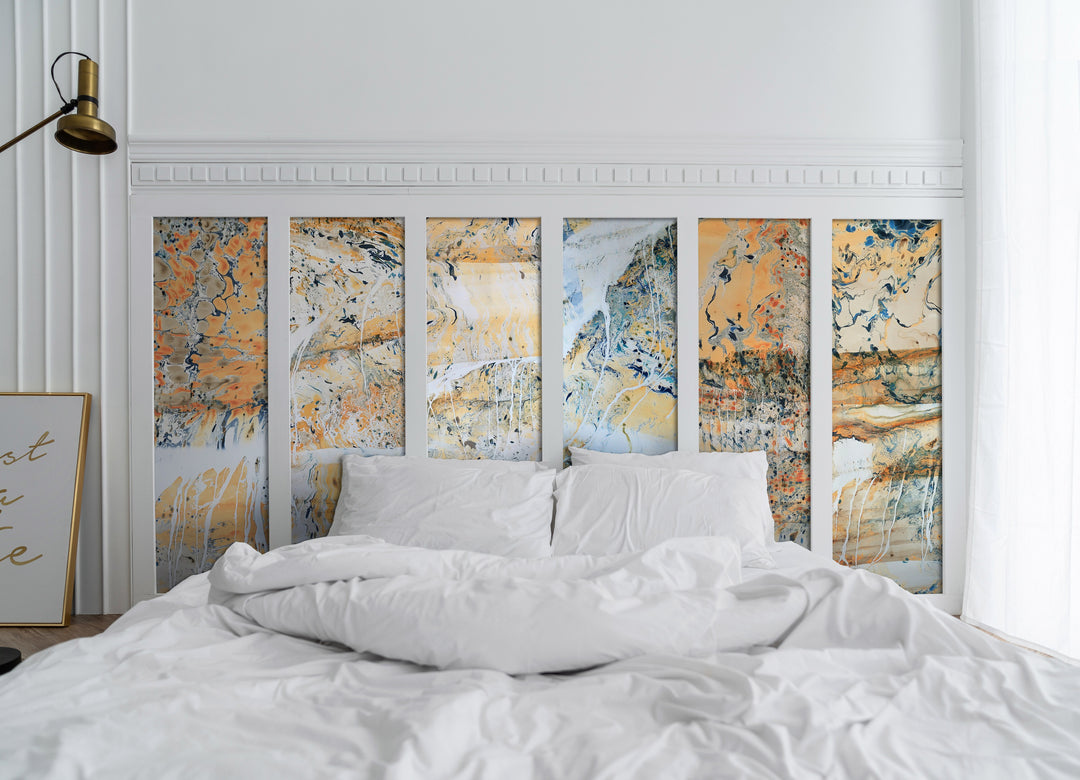Lewa Union
Overview
This design is based at the Lewa Wildlife Conservatory in Kenya. This incredible place was a cattle ranch 40 years ago and has been transformed by the Craig family into one of the most successful private wildlife conservation initiatives in the world, and a UNESCO World Heritage Site. There is a theme of myrmecophagous species that specialize in ants and termites. The species featured in this design include Jackson’s hornbill, termite mounds, a young aardwolf, A mother Temnick’s ground pangolin with her baby riding on her back, a colony of naked mole rats, a carpenter bee, and lucky beans tree, whistling thorn acacia (which has an incredible symbiosis with biting ants), and the full moon setting over Mount Kenya, as visible from Lewa. With exquisite botanical detail, this design builds upon the current passion in interiors for honoring the natural world.
Measurements
• Each roll is 27.6" x 10.9 yards
• Repeat: 20" half drop
Additional Notes
• Printed to order, approximate 3-4 week lead time.
• The designs are printed on Uncoated Non-woven 147gsm. This design will also be available on Coated Non-woven 147gsm. The uncoated wallpaper has a matt finish and vibrant but gentle, muted colors. The Coated wallpaper has a slight shine, is more wipeable and has deeper colors.
• Fire certified for both Europe and the USA. Classified to BS En 13501-1-1:2002, class B, s1, d0
Color Description
Multi colored illustration on a dark teal blue background
Additional Info
Newton Paisley designs tell the stories of endangered and neglected species, whilst rejoicing in their extraordinary diversity and beauty. Their mission is to celebrate nature and inspiring people to create beautiful, biophilic home-habitats. As reported by Pattern Observer, flora and fauna make up fully 70% of the textile design market across fashion and home interiors, yet often these designs are lick-and-stick or lacking context in the natural world. Newton Paisley designs are different – full of geeky specificity, authenticity, narrative, love…. Each design tells stories of neglected and endangered species, and, even better, contributes towards the preservation of critical wild habitat.
